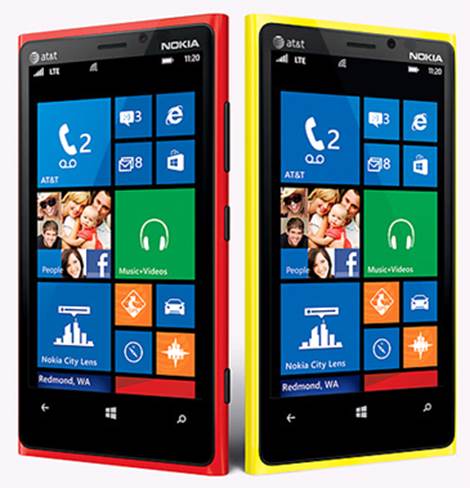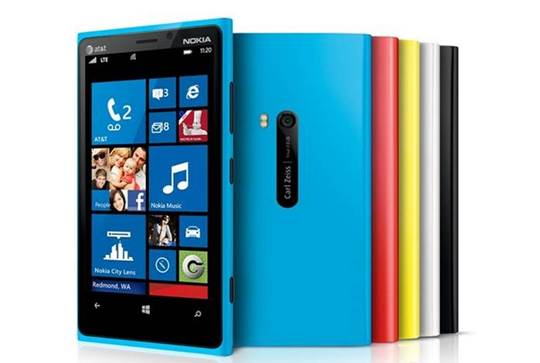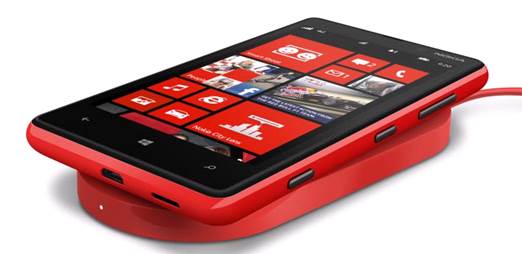It has been about one year since our first
review on Nokia’s Windows Phone, and now, we are looking at its senior
second-generation, the Lumia 920. Since the launch of Lumia 800, Nokia has
played an essential role in improving Windows Phone’s position in the intense
smartphone market (but lucrative). While it can share the spot light with the
new HTC 8X, this slab of hewn polycarbonate has attracted many enthusiasts. It
is sure that people among this considerable number of potential customers are
lusting for the PureView photography technology of the phone and after our
first tests, it seems to leave the same impression as the lossless optical zoom
presented on PureView 808.
Lumia 920 ruled the presentation of Nokia
at Microsoft’s Windows Phone 8 event months ago, when the smaller and junior
Lumia 820 just merely looked over briefly. It owns a “better than HD” high
contrast display with the resolution of 1,280x720, 4.5 inches in size, built-in
wireless charging, stable build quality and a lot of Nokia’s exclusive
additional software. This time, at least in terms of the hardware
specifications, this company tended to put its hyper-product into the same
segment as phones like Galaxy S III and iPhone 5. Could the largest and
brightest smartphone (literally) of Nokia keep the leading position in Windows
Phone section? How does the camera perform with extended use? And is Nokia’s
provision enough to pull you out of the attraction of Android or iOS next time
when you buy a new phone?

Nokia
Lumia 920
Hardware
We will be straightforward: Nokia created a
huge smartphone. After considering the curves and weight of the Windows Phone
8X (4.5 ounces), Lumia 920 increases the scale to 6.5 ounce. While other phone
manufacturers are giving the limits of lightweight materials and structures the
priority to be enhanced, this giant beast is considerable heavier and feels
much bigger than most of other new phones. Admittedly, the Nokia’s Windows Phone
hyper-product has bigger 4.5inch screen, but that difference (HTC’s screen is
4.3 inches) does not explain why these two Windows Phones give so
distinguishable feelings when we hold them in hand. Measuring the pair, the
Lumia 920 is 0.42 inch thick to the 8X’s 0.4 inch. Their sizes are also
comparable. However, we feel more familiar holding the 8X due to its tapered
edges rather than holding this new Lumia phone. This means, we are able to
reach the out reaches of that PureMotion HD+ screen. Additionally, despite the
larger screen, navigating with one hand is still possible, although for
small-hand people, it might be a stretch.
Fortunately, some design details of the
Lumia 800 has been applied for this new product this avoids some complaints
about the design against its bigger brothers. Yes, this phone’s screen curves
into the frame and does not protrude abnormally like the Lumia 900. Our white
model – unfortunately, the eye-catching red and yellow models are still not
available to evaluate – has a glossy coating (but fingerprints and dust can
easily stick to it), but if you desire for another matte-finish smartphone, it
is lucky that the black AT&T LTE version seems to have a shine-free look.

Lumia
920’s back and front design
However, it's nonetheless another
beautifully crafted smartphone from the Nokia design team, with tiny details
like micro-drilled holes in the base for the pair of loudspeakers reminding you
that this is a company that knows how to make desirable hardware - even if the
final product is a bit weighty. The rounded sides and that slightly curved back
make this phone easier to grip than its predecessors. This time around, there's
also a darker finish on both the rear camera unit and the physical buttons
lined up on the right edge (update: these are actually ceramic and according to
Nokia, will be less prone to scratches), while the flash is the only other
detail on the otherwise smoothly curved back. Along the flat top edge, you'll
find the pin-accessible micro-SIM slot (no Nano-SIM just yet), some tiny
perforations that connect to the secondary mic and headphone socket. The lower
edge offers immediate access to the micro-USB port and the aforementioned two
speakers.
However, it is another well designed
smartphone from Nokia’s designer group, with tiny but subtle details like the
micro-drilled holes at the bottom of the external speakers reminding you that
this company really know how to make you lust for its desirable hardware –
although the last product is quite heavy. The rounded sides and the slightly
curved back make us feel that this phone is easier to hold compared to its
predecessor. This time, there is a darker surface in the back camera unit lying
among the lined up physical buttons on the right side edge (updated: they are
really made of pottery and therefore, according to Nokia, it will be less
scratched) whereas the flash light is the only different detail in the slightly
curved back. Along the straight top edge, you will find the accessible
micro-SIM (not Nano-SIM), some tiny holes connecting the second microphone and
the headphone socket. The immediate connection with micro-SUB port and two
speakers mentioned above are offered in the lower edge.
Around front, the Lumia 920’s screen is
enhanced with a slightly thick bezel on which has three capacitive Windows
buttons. They are all bright, and as what we would say in the display section,
they work with gloves or freshly manicured nails. Along the top of the screen,
the Nokia brand is left on the right corner, with earpiece lying above the
screen center. Taking the place between the two is the ambient light sensor and
the 1.2MP front camera. Below the screen Nokia installs the Qi wireless charging
for the 2000mAh battery of the phone. Our evaluated model comes with the
wireless charging pad to test that ability, and it performs as well as
expected; putting most of the surface of the phone on the pad would activate
the charging process immediately, if slowly. The non-removable battery role is
to provide power for the dual-core Snapdragon S4 along with the 1GB RAM and
32GB storage capacity. Microsoft also offers the 7GB storage in the cloud for
any new SkyDrive account and although you have already had 25GB, there is no
microSD slot to extend the physical memory.

Putting
the phone on the pad would activate the charging process immediately
As what has been expected, our universal
model intrudes in the quad-band radios with GSM / GPRS / EDGE (850 / 900 / 1800
/ 1900MHz), UMTS / HSPA+ (850 / 900 / 1900 / 2100MHz) and LTE (800 / 900 / 1800
/ 2100 / 2600MHz) whereas this device would be exclusively provided by AT&T
in US, and EE (for now) in UK – the first 4G network of this country. What if
there is not any 4G network around? A DC-HSPA+ (42Mbps) is also stuffed inside
that polycarbonate shell.